
Nora Ellen Turner, 1917 Student
The following information about the uniform, cap, and pin of The Ohio State University School of Nursing was written by Rena Edwards Daily Coppess, one of the students from the first graduating class of 1917.
The Uniform
Every institution has a beginning and a past, and in its past its traditions are formed. As the years pass and changes and progress take place, only those who belong to the past remember its humble beginnings and the reasons for the traditions. Such is the story of the uniform, the cap, and the pin of the School of Nursing of The Ohio State University.
When the school was established and opened in 1914, such problems as the choice of the uniform and the cap had to be considered. Three patterns for the uniform were chosen, by those in charge from which to make a selection. Two of the patterns had long sleeves and high necks. The other was the blue chambray under dress with a large, white crossover collar, short sleeves with white cuffs and the white apron gathered full on the band and fastened in the back with two buttons.
Hoping to choose a uniform that would stand the test of time with its changes in styles, the decision was a difficult one to make. In those days when such problems arose, Dr. Thompson, the beloved president of the University was consulted. After careful consideration of the styles presented, Dr. Thompson chose the one described for its comfort and practicality.
In 1914 we were just emerging from the Victorian era and had not yet reached the roaring 20’s so the unmentionables were an important part of the uniform. No lady should ever lift or turn a male patient without some protection, and a corset with stays was the garment worn, for in those days no one ever heard of the good old two way stretch. Summer and winter, regardless of the all-enveloping white apron, a petticoat must be worn, and worn in such a way that it never peeked below the hem of the uniform which came just to the shoe tops. The discipline for the infraction of this rule was usually the loss of those two precious hours off duty. Black, high top shoes and black cotton hose completed the uniform. In the spring of 1916, upon the request of students, we were permitted to wear white shoes and white hose from May until September. There is no record when the continuous use of white hose and shoes became part of the uniform.
In 1950 or 1951, by action of the faculty of the School of Nursing, some changes were made in the uniforms. A pale blue flytex material was chosen rather than the blue chambray, because of fading and worn look of the chambray after much usage.
The turnover collar and shawl effect fichu was also adopted at this time, for by removing the fichu and apron, the street attire of the student was more appropriate for attending classes on the campus. One small change was made in the apron – a third button was added to the band.
The Cap
The cap of the School of Nursing of the Ohio State University was designed by Miss Jessie Harrod, first superintendent of the School. It was her desire to have a cap that would be becoming to all who would wear it, be easily laundered and easily kept in place on the head to add to the dignity of the wearer.
The hair was to be dressed with a knot or a roll in the back and the cap kept in place with a small hat pin. Many of the students invented their own cap holders by using rubber bands which held the cap in place even more securely than the pin, although the pin still had to be in evidence. Miss Harrod designed well, for at that time, no one ever though that in a few short years short hair would be vogue, and the cap still lends itself attractively to either style of hair dress.
Because of the standards of State registration were set up, the recognized probation period for nurses in training was three months. The tradition of capping exercises had not been established, and when we completed our probation, we were called into Miss Harrod’s office. Before giving us the cap, she explained its significance and we were instructed to always wear it with dignity and honor. The nurse did not easily forget for the greatest misfortune that could befall her was to have her cap taken away for a period of time. Our real capping exercise took place later in the nurses’ home when we received the congratulations of our classmates.
We received our narrow and wide black velvet bands in much the same way; with the kindly words of advice, and admonition to always remember our obligation to our profession and our responsibility in assuming our position in the training school to which the band entitled us.
Some of the uniqueness of the cap may have been lost through the passing years yet it still retains its simple dignity.
The Pin
The original pin of the School of Nursing is different from the one now worn by the graduates. When the plans for the first graduation were being made in the fall of 1917, the choice of a pin was given much consideration. The students who were to graduate felt they should have some voice in choosing the pin they were to wear. It must be remembered that this was long before Student Councils and student governments were formed, but no council meetings could have functioned more effectively then some of our off-duty meetings. Quite frequently Miss Harrod, the Superintendent of the School or one of the supervisors entered into our discussions.
Two or three pins had been considered but they followed the popular style of that day, being gold embossed with enamel. When the choice Miss Harrod made did not meet our approval, she went to Dr. Thompson. It was his opinion that the nurses should make the choice, provided that the pin could be worn with dignity and be representative of the University. He also stipulated that the class which would graduate the following year should be consulted.
After numerous sessions and many catalogues, the nurses chose a maltese cross, centered by the seal of the University, and bearing the letters H.T.S. (Homeopathic Training School) and the date of graduation.
In 1922, when the Homeopathic College was disbanded by the Board of Trustees of the University and the present college established on the campus, Dr. McCampbell, dean of the Medical School, recommended that the pin be changed. The records do not show who made the choice, but the pin, having the semblance of a cross, circled by a wreath, and centered with the motif elements of the University and bearing the name Starling Loving was the one chosen. Later, when the School of Nursing was established, the letter was changed to “School of Nursing – The Ohio State University”. This is the pin which most graduates wear now.



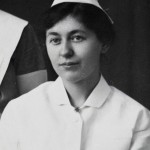
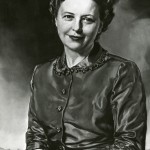
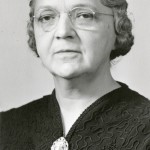
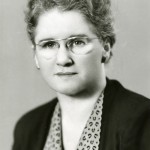
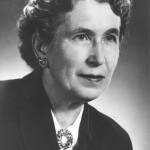

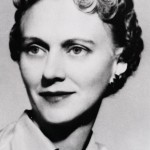

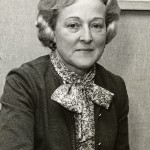
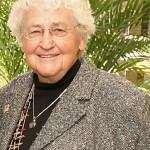

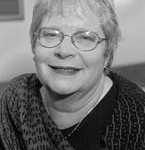






Recent Comments